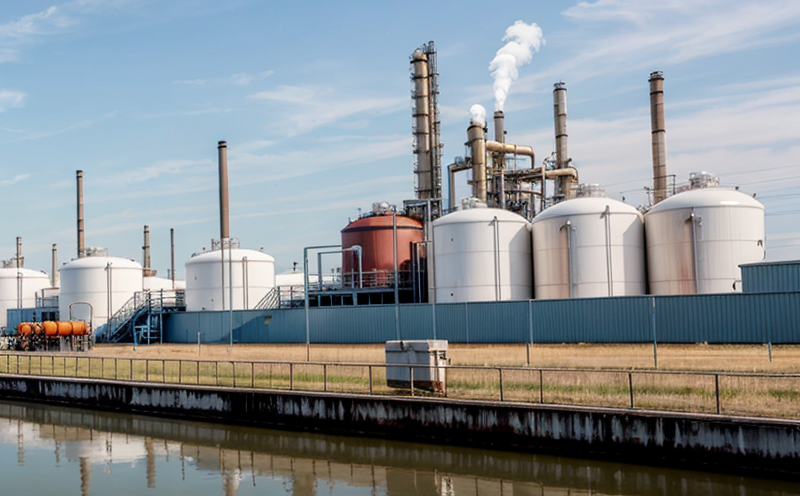ISO 16000 Indoor Air Chemical Safety Testing
The ISO 16000 series of standards provides a comprehensive framework for assessing indoor air quality (IAQ) and is widely recognized as the leading set of guidelines for ensuring safe, healthy environments in residential, commercial, and industrial settings. ISO 16000-3, specifically, focuses on the determination of volatile organic compounds (VOCs), semi-volatile organic compounds (SVOCs), and other chemical species in indoor air.
The ISO 16000 Indoor Air Chemical Safety Testing service is essential for organizations committed to maintaining a healthy working environment. This testing ensures that the concentration levels of various chemicals within the air are within safe limits, as defined by international standards such as ISO 16000-3 and EN 4528.
The process involves several critical steps starting with the collection of indoor air samples using high-efficiency particulate air (HEPA) filters. These samples are then analyzed in our state-of-the-art laboratories to identify the presence of harmful chemicals. Our team uses advanced instrumentation like gas chromatography-mass spectrometry (GC-MS) and Fourier transform infrared spectroscopy (FTIR) to ensure precision and reliability.
Once testing is complete, we provide detailed reports that include a list of detected compounds along with their respective concentrations. Compliance officers can use these reports to make informed decisions regarding necessary corrective actions or improvements in ventilation systems. For R&D engineers, this service offers valuable insights into the chemical composition of indoor air, which can inform product development and design.
The ISO 16000-3 standard ensures that all tests are conducted under controlled conditions, with strict adherence to both procedural and sampling guidelines outlined in the document. This guarantees consistent results across different environments and facilities.
In addition to routine testing, we also offer specialized services such as before-and-after studies following renovations or new installations, helping businesses demonstrate compliance post-construction. Our team can assist quality managers and procurement officers in selecting appropriate materials that meet stringent air quality standards.
Our expertise extends beyond just the technical aspects; we understand how critical it is for organizations to balance cost-effectiveness with health and safety considerations when implementing IAQ solutions. By partnering with us, you gain access to comprehensive support throughout every stage of your project—from initial consultation through final report delivery.
Scope and Methodology
The scope of ISO 16000-3 indoor air chemical safety testing includes the identification of volatile organic compounds (VOCs) and semi-volatile organic compounds (SVOCs), as well as other potentially harmful chemicals present in indoor environments. The methodology involves several key steps:
- Sampling: Air samples are collected using standardized sampling techniques, ensuring accurate representation of the air within the space being tested.
- Preparation: Collected samples undergo initial preparation procedures to stabilize volatile compounds and prevent degradation.
- Analysis: Using sophisticated analytical equipment such as GC-MS and FTIR, we analyze the samples for the presence of target chemicals.
- Evaluation: Results are evaluated against established thresholds provided by relevant international standards like ISO 16000-3 and EN 4528.
Our laboratory employs highly trained technicians who follow strict protocols to ensure accurate results. All analyses comply with the latest versions of these internationally recognized standards, ensuring consistency and reliability in our findings.
Industry Applications
- Residential Construction: Ensuring new homes meet stringent air quality guidelines.
- Commercial Buildings: Maintaining healthy working conditions for employees and clients alike.
- Hospitality Industry: Providing assurance to guests about the cleanliness of their environment.
- Manufacturing Plants: Protecting workers from exposure to hazardous chemicals during production processes.
- Schools & Universities: Creating safer learning environments for students and staff.
In addition to these sectors, ISO 16000-3 testing is beneficial for any organization concerned about employee health and productivity. By identifying potential sources of contamination early on, companies can take proactive measures to improve indoor air quality before issues arise.
Why Choose This Test
- Compliance Assurance: Stay compliant with international standards like ISO 16000-3 and EN 4528.
- Health Protection: Safeguard your workforce from harmful chemical exposures.
- Data Integrity: Obtain reliable data through rigorous sampling and analysis methods.
- Cost Efficiency: Prevent costly remediation efforts by addressing issues early on.
Beyond mere compliance, our ISO 16000-3 testing offers numerous benefits. It enables organizations to create safer working conditions while enhancing overall productivity. By identifying problematic areas promptly, businesses can implement targeted improvements that lead to long-term savings and improved reputation.





